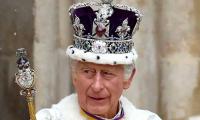ISLAMABAD: The National Accountability Bureau’s dubious handling of Asif Ali Zardari’s corruption cases is a perfect case study of how the Bureau and accountability system played with the criminal justice system.
On Thursday, following the request of NAB, the Islamabad High Court (IHC) accepted the Bureau’s application to withdraw its four appeals against PPP Co-chairman and former president Asif Ali Zardari’s acquittal in different corruption references.
In its application, the anti-graft body had adopted the stance that only photocopies of documents in references against Zardari were on record, noting that further prosecution would be a futile exercise. It was added that the available documentary evidence was not in accordance with the law; therefore, to fulfil the requirements of justice, appeals against the acquittal of the PPP co-chairman in NAB references should be allowed to be withdrawn.
Asif Ali Zardari was acquitted by the accountability court in ARY Gold, SGS, Cotenca, Ursus Tractors and Polo Ground references during the Nawaz Sharif tenure mainly on the ground that the real copies of documentary evidence of corruption against the former president were missing.
The NAB though had filed the appeals against the acquittal by the accountability courts, there was no inquiry done how the documentary evidence got missing. No responsibility was fixed and no heads rolled for missing the record, which had become the main reason for Zardari’s acquittal.
Interestingly, some of the NAB officials were of the view that the actual record got missing from court but the matter was neither probed at the Bureau’s level nor the court concerned, or the high court was requested to probe the matter.
During the PPP’s tenure and when Zardari was the President of Pakistan, NAB through its friendly prosecution got all co-accused of Zardari acquitted in the SGS, Cotecna and ARY Gold cases.
In 2011, The News had unearthed a unique scandal which involved the copying of judgments by two different accountability courts in the SGS, Cotecna and ARY Gold references. However, that case too was ignored and no one has been punished for the scandal. This issue not only relates to the alleged serious misconduct of the accountability court judges involved but also pertains to the finality of cases decided in favour of influential accused in a dubious manner.
What is really surprising is that, despite having been established by an inquiry conducted by the Lahore High Court (LHC) that a serious wrong was done: (i) the concerned accountability judges were allowed to retire with full pensionary benefits; (ii) the corruption cases which were decided in a controversial manner were never retried; (iii) no inquiry was ever ordered against NAB and its officers who had managed and facilitated the scandalous decisions.
Following a suo motu notice of The News report by the SC, the LHC inquiry had established the wrongs in the accountability court judgment. Handed down by an accountability Court in Rawalpindi in 2011, the Cotecna judgement was almost a replica of SGS case order issued by another Rawalpindi accountability court. Not only did both the judgments conclude in the same way but they surprisingly contained innumerable similar words, expressions and even paragraphs. In the academic world, this would be considered a perfect case of plagiarism.
Similarities apart, the two judgments on the SGS and Cotecna cases were signed by two different judges of two different courts. The SGS judgment was issued by Accountability Court No II whereas the Cotecna case judgment was issued by Accountability Court No III.
After The News broke the story in September 2011, the matter was referred to the LHC, which initiated an inquiry against the two accountability court judges after an LHC inspection team had endorsed The News report. The report was referred to the inspection team, which found “impressions of deja vu” in the two judgments following which the LHC had ordered a formal inquiry against the two judges. However, during the course of inquiry, the two accountability court judges attained the age of retirement, which resulted in the closure of inquiry.
Their retirement conveniently helped the judges avoid facing a possible penalty. More importantly, the controversial judgments in those cases were never set aside. NAB had also avoided going into appeal against these judgments.
The SGS case judgment was handed down on July 30, 2011, whereas the Cotecna case order was handed down on September 16, 2011. The similarities between the two judgments were surprising and unbelievable despite the fact that the two references remained separate from the very beginning.
The judgments of the ARY Gold reference and the SGS reference had exposed some strange anomalies. The most conspicuous of these was the acceptance of former secretary finance and the then executive director as prosecution witness in the SGS case while the same individual was declared by the same court in the ARY Gold reference as a proclaimed offender. Interestingly, some of these corruption cases were also closed by the Government of Pakistan in Swiss courts.
Five thousand kilogrammes of hashish, heroin, bhang and ice worth Rs2,634.44 million were destroyed
Programme approved during recent UAE government annual meetings under directives of Emirates Genome Council
Atta Tarar congratulated Pakistan team on winning ODI series against South Africa
PIA spox says airline was working to rejuvenate its aircraft, bringing them back into operational fleet
Authorities confirm driver’s death, saying he “committed suicide while the train was moving”
Murad stresses need to protect country from external conspiracies, in line with Jinnah’s vision







